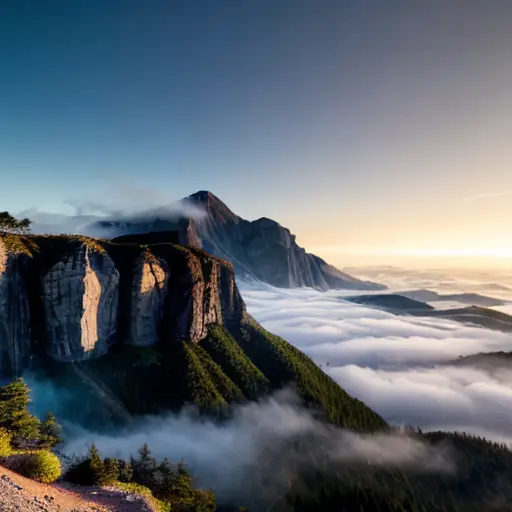In a world where capturing moments meant sitting still for hours while a painter painstakingly recreated your likeness, photography burst onto the scene like a mischievous prankster. Suddenly, people could freeze time with the click of a button, immortalizing their most embarrassing, heartwarming, and downright hilarious moments. From awkward family portraits to candid shots of politicians caught mid-sneeze, photography became the ultimate truth-teller, exposing the world's quirks and imperfections. But it didn't stop there. As photography evolved, it became a powerful tool for storytelling, journalism, and even activism. It allowed us to witness history unfold before our eyes, to empathize with strangers' struggles, and to laugh at the absurdity of life. Photography changed the world by giving us a new lens through which to view ourselves and our surroundings, reminding us that even in the most serious of moments, a little humor can go a long way.
One interesting fact about how photography changed the world is that it played a crucial role in shaping public opinion and influencing social change. During the late 19th and early 20th centuries, when photography became more accessible and widely used, it allowed for the documentation of social injustices and inequalities. Photographs captured the harsh realities of poverty, child labor, and other societal issues, bringing them to the forefront of public consciousness. These images sparked empathy, outrage, and a desire for reform, ultimately leading to significant social and political changes. Photography became a powerful tool for advocacy and a catalyst for social progress, demonstrating the transformative impact it had on the world.
In the early days, photography was a luxury reserved for the elite, a form of art that only the wealthy could afford to indulge in. But as technology advanced and cameras became more accessible, photography transformed from an exclusive art form into a mass medium that could be enjoyed by all. Suddenly, everyday people had the power to capture and share their own unique perspectives, breaking down barriers and connecting people from all walks of life. Photography became a universal language, transcending borders and cultures, allowing us to witness the beauty, diversity, and shared experiences of our global community. It changed the world by democratizing visual storytelling, empowering individuals to have their voices heard, and reminding us that every person has a story worth capturing.

Photography has played a pivotal role in shaping perspectives and driving social change throughout history. With its ability to capture raw emotions, document injustices, and expose hidden truths, photography has served as a powerful tool for advocacy and activism. From the iconic images of the Civil Rights Movement to the harrowing photographs of war-torn regions, photography has brought global issues to the forefront, forcing society to confront uncomfortable realities.
One of the most significant ways photography has changed the world is by raising awareness and mobilizing action. Through powerful visual storytelling, photographers have shed light on social issues that were previously ignored or misunderstood. By capturing the faces and stories of marginalized communities, photography has humanized the struggles of others, fostering empathy and inspiring collective action. It has given a voice to the voiceless, amplifying their stories and demanding justice.
Moreover, photography has the ability to challenge societal norms and break down stereotypes. By capturing diverse perspectives and experiences, it has broadened our understanding of the world and shattered preconceived notions. Through the lens of a camera, photographers have highlighted the beauty and resilience of marginalized communities, challenging the dominant narratives and promoting inclusivity.
Photography has also played a crucial role in preserving history and creating a visual record of social change. From the iconic images of the suffragette movement to the documentation of LGBTQ+ rights struggles, these photographs serve as a testament to the progress made and the challenges that still lie ahead. They remind us of the power of collective action and the importance of fighting for a more just and equitable society.
In conclusion, photography has changed the world by shaping perspectives and driving social change. Through its ability to raise awareness, challenge stereotypes, and preserve history, photography has been a catalyst for progress and a powerful tool for advocacy. It has the power to inspire, educate, and ignite change, reminding us that a single photograph has the potential to transform the world.
Fun Fact: Did you know that photography changed the world by revolutionizing the way we perceive time? Before the invention of photography, the only way to capture a moment was through paintings or drawings, which required hours or even days of meticulous work. However, with the advent of photography, moments could be captured instantaneously, freezing time in a way that had never been possible before. This not only allowed people to document historical events and preserve memories, but it also sparked a new appreciation for the fleeting beauty of everyday life. Photography truly transformed the world by giving us the power to capture and cherish moments that would otherwise be lost to the passage of time.
The digital revolution has completely transformed the world of photography, revolutionizing the way we capture, edit, and share images. With the advent of smartphones and social media platforms, photography has become more accessible than ever before. Now, anyone with a smartphone can instantly capture and share moments with the world. This democratization of photography has not only empowered individuals to become visual storytellers but has also fostered a global community of creators. Additionally, the digital age has brought about advancements in editing software and online platforms, allowing photographers to enhance their images and reach wider audiences. Photography in the modern age has changed the world by breaking down barriers, connecting people across continents, and providing a platform for diverse voices to be heard. It has become a powerful tool for self-expression, activism, and cultural exchange, shaping our understanding of the world and fostering a sense of global unity.